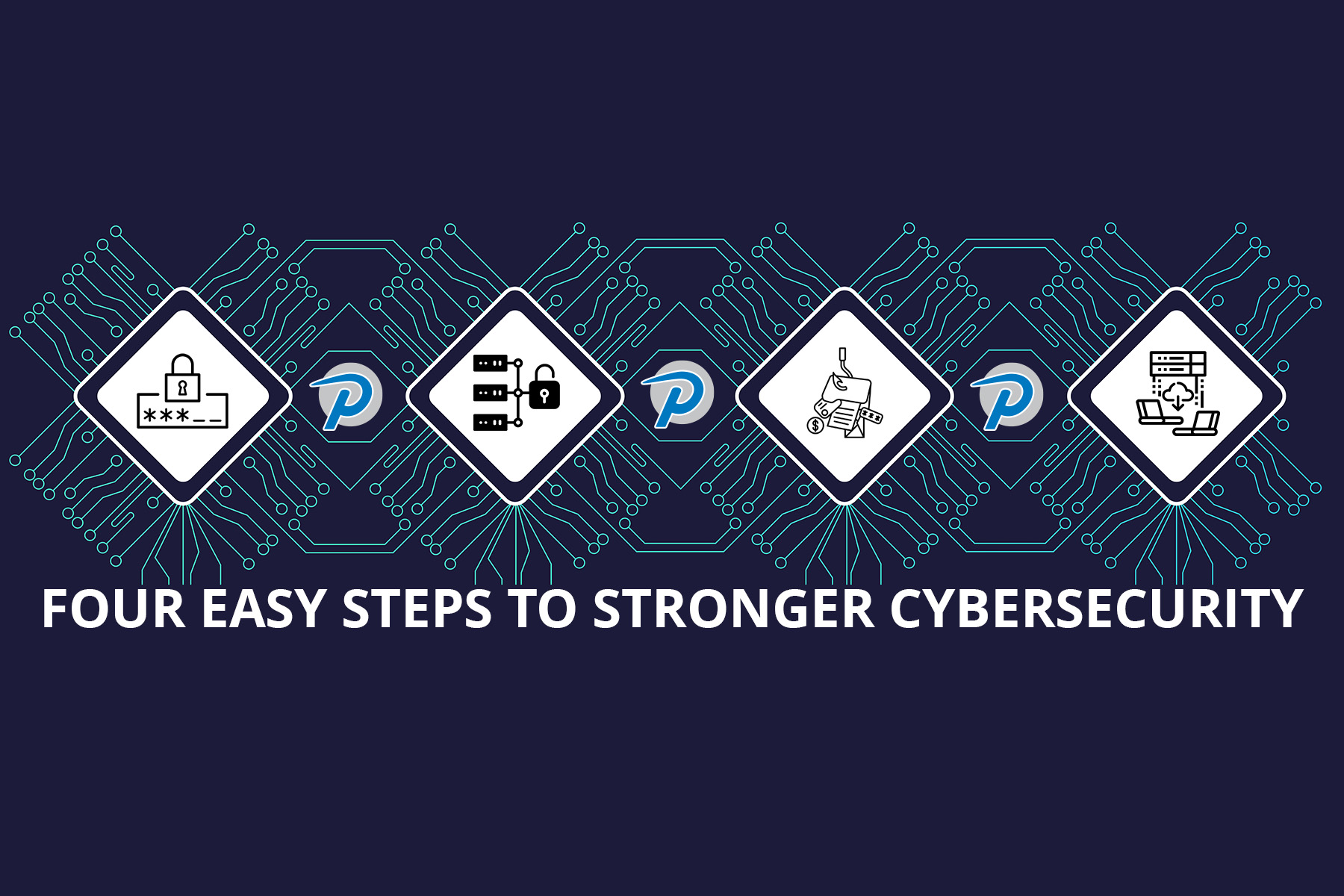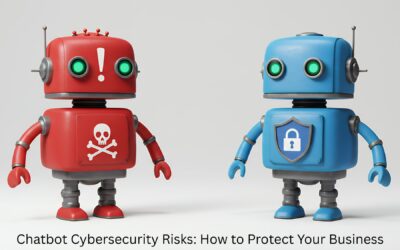Phishing, Business Email Compromise, and Ransomware continue to rank as the most popular cyberattack techniques and small businesses account for nearly half of all victims. The good news is that there are simple yet effective steps small businesses can take to strengthen their security posture. Here are four easy steps to stronger cybersecurity that every small business should consider.
- Use Strong Passwords and a Password Manager. Strong passwords are critical to protecting data. They need to be complex (Use 16+ character combinations of random uppercase and lowercase letters, numbers, and special characters in your passwords) and updated routinely. That can get daunting when you should also have a unique password for each application you use. That’s where a password manager can help. Password managers are a powerful tool to help you create long, random, and unique passwords for each of your accounts. Plus, they make storing passwords and user IDs easy.
- Turn on Multi-Factor Authentication (MFA). MFA adds an extra layer of security to your accounts by requiring users to provide multiple forms of verification. This is easy to implement and protects against unauthorized access. MFA typically involves something you know (password) and something you physically have (e.g., a mobile device). Even if a bad actor has your login credentials, they will not have your physical device (especially a second physical device like your mobile phone), so their access is denied and the threat is thwarted.
- Recognize and Report Phishing. Phishing emails, texts, and calls are the number one way data gets compromised. An unaware, unsuspecting, and/or overwhelmed employee could easily divulge login credentials or financial information through malicious pop-ups, links in emails or documents, or other requests that appear normal to their daily business functions. You can decrease the effectiveness of these threats through routine security awareness training for you and your employees, implement email filters that help detect and quarantine suspicious activity, and establish clear reporting procedures so that any potential threats can be investigated and mitigated promptly.
- Update Software. Outdated software and operating systems are prime targets for cyberattacks. Cybercriminals often exploit known vulnerabilities to gain access to systems. Typically the software and operating systems you are using are from major tech companies that have cybersecurity experts that stay on top of emerging attack trends and work with their developers to make their products more secure. Those vulnerability patches are sent to you through updates so regularly updating your software helps protect your systems from exploitation. Make sure to enable automatic updates whenever possible and make sure your IT staff or partner has a routine update maintenance schedule.
Implementing these measures can safeguard your business, customer data, and reputation from cyber threats. If you need help with these or other advanced strategies to improve your security posture, we can help!




